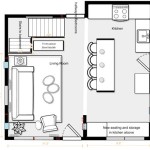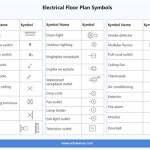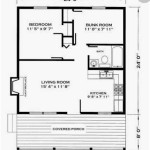How to Design a Floor Plan for a House: A Comprehensive Guide
Designing a floor plan for a house is a crucial step in the homebuilding process. A well-designed floor plan can enhance the functionality, comfort, and overall aesthetic of your future home. Here's a comprehensive guide to help you create a floor plan that meets your needs and aspirations.
1. Determine Your Needs and Preferences
Start by identifying your specific requirements and preferences. Consider the following factors:
- Number of bedrooms and bathrooms
- Desired room sizes and configurations li>Lifestyle and daily routines
- Personal preferences for style and layout
2. Establish a Budget
Set a realistic budget for your homebuilding project. This will impact the size, complexity, and features of your floor plan.
3. Research Home Design Trends and Styles
Explore different architectural styles, home design trends, and popular floor plan layouts. This will provide you with inspiration and help you make informed decisions.
4. Consider Site Conditions
Take into account the slope, orientation, and soil conditions of your building site. These factors can influence the placement and design of your home.
5. Create a Room Layout
Sketch out a rough layout of each room, including windows, doors, and furniture placement. Experiment with different arrangements to maximize space utilization and create a functional flow.
6. Pay Attention to Utility Areas
Don't overlook utility areas such as the kitchen, bathrooms, laundry room, and storage spaces. These areas play a vital role in the efficiency and comfort of your home.
7. Design for Natural Light and Ventilation
Incorporate windows and doors to maximize natural light and ventilation. This can reduce energy costs and create a healthier indoor environment.
8. Seek Professional Help if Needed
If you're facing challenges or need expert guidance, consider consulting with an architect or home designer. They can provide professional advice and technical assistance to ensure your floor plan meets all your requirements.
9. Review and Revise
Once you have a draft floor plan, take time to review it thoroughly. Share it with family members, friends, or a designer for feedback. Be open to suggestions and consider revisions to optimize the design.
10. Finalize and Document
Once you're satisfied with your floor plan, make the final adjustments and document it accurately. This document will be used by builders to construct your home.
Remember, designing a floor plan is an iterative process that requires careful planning, attention to detail, and a willingness to explore different options. By following these steps and leveraging available resources, you can create a floor plan that perfectly complements your lifestyle and fulfills your dream of a beautiful and functional home.
House Plans How To Design Your Home Plan

Floor Plans Types Symbols Examples

Small House Design Shd 2024007 Pinoy Eplans One Y Bungalow Plans Layout

House Floor Plans Your Best Guide To Home Layout Ideas

Floor Plans Learn How To Design And Plan

How To Draw A Floor Plan Top Mistakes Avoid Foyr

28 Modern House Designs Floor Plans And Small Ideas

Tips For Selecting The Right Floor Plan Your Home Sater Design Collection

Floor Plan Creator And Designer Free Easy App

Creating A Great Floor Plan Tips From Home Designer








